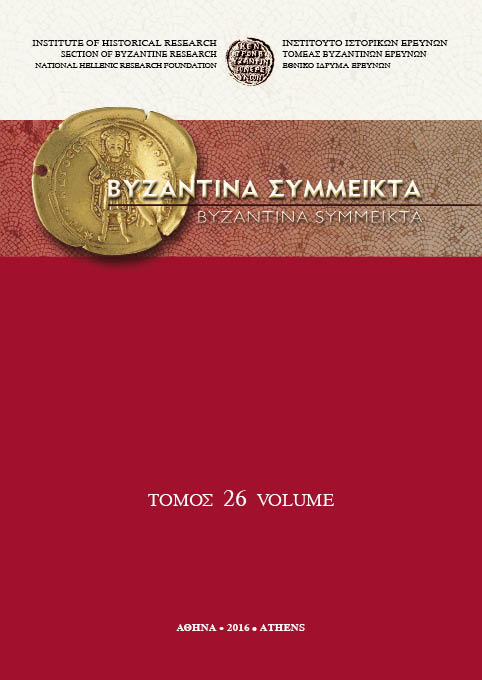Les relations entre l' ancienne et la nouvelle Rome sous Basile II et l'intronisation d'Alexis Stoudite
Abstract
This study investigates the relations between the churches of Elder and New Rome during the reign of Basil II and concludes that the attempts to impose Boniface VII in 984/985 and John XVI in 997/998 as popes of Rome and the long controversy between the two sides (1011-1024) was against the policy of the Macedonian dynasty and also threatened Byzantine rule in Southern Italy. Near the time of his death, Basil II assigned the continuation of the reconciliation policy with the Roman Church (accomplished in 1024/1025) to the patriarch Alexios and to the long lasting tradition of the monastery of Stoudios. The warm welcome given by Alexios to abbot Richard of Saint-Vanne, advocate of the rising power and role of the pope of Rome, reveals a deeper reason which dictated to Basil II the choice of a Stoudite for the patriarchal see of Constantinople.
Article Details
- How to Cite
-
ΒΛΥΣΙΔΟΥ Β. (2015). Les relations entre l’ ancienne et la nouvelle Rome sous Basile II et l’intronisation d’Alexis Stoudite. Byzantina Symmeikta, 24(1), 293–311. https://doi.org/10.12681/byzsym.1185
- Issue
- ΒΥΖΑΝΤΙΝΑ SΥΜΜΕΙΚΤΑ 24
- Section
- Articles

This work is licensed under a Creative Commons Attribution-NonCommercial-ShareAlike 4.0 International License.
Copyright: The copyright for articles in this journal is retained by the author(s), with first publication rights granted to the journal. By virtue of their appearance in this open access journal, articles are free to use (with the exception of the non-granted right to make derivative works) with proper attribution for non-commercial uses (licence Creative Commons 4.0). NHRF retains the worldwide right to reproduce, display, distribute, and use articles published in BYZANTINA SYMMEIKTA in all formats and media, either separately or as part of collective works for the full term of copyright. This includes but is not limited to the right to publish articles in an issue of the Journal, copy and distribute individual reprints of the articles, authorize reproduction of articles in their entirety in another NHRF publication, and authorize reproduction and distribution of articles or abstracts thereof by means of computerized retrieval systems.









